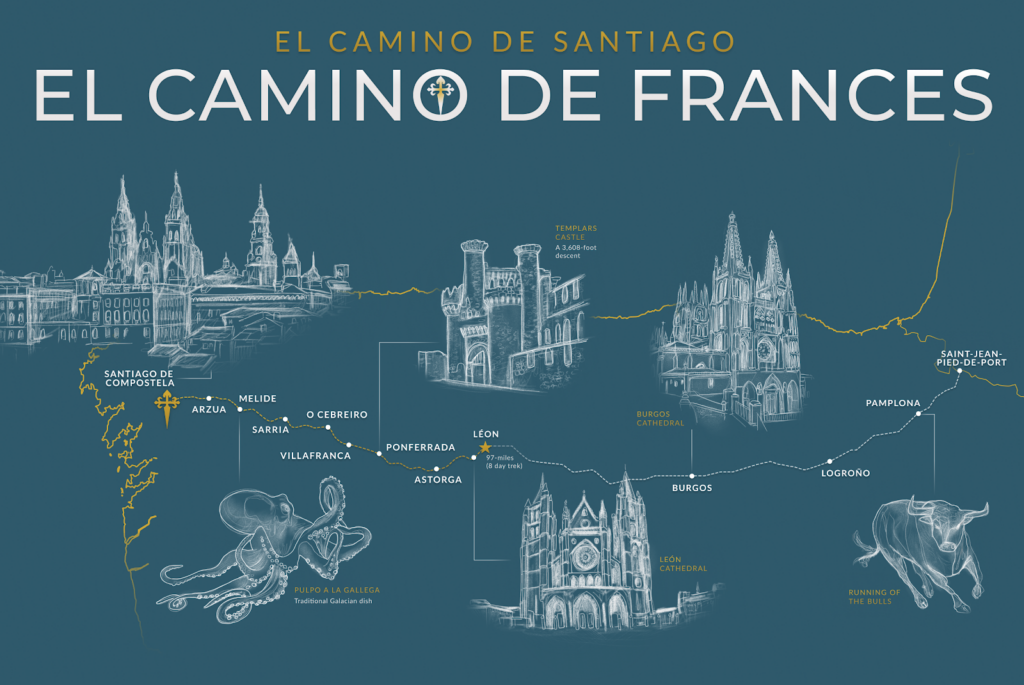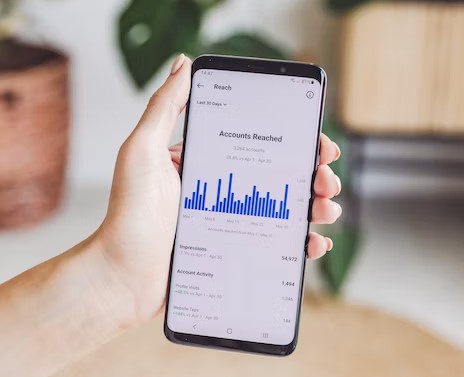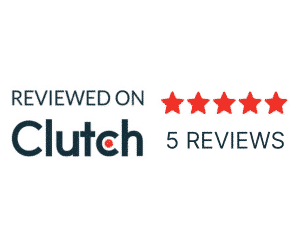You’ve decided to start link building, where do you go from here?
If you’re planning to start link building but don’t know where to begin, then you’re in the right place. You’ve probably already determined that link building is a valuable investment for increasing a site’s organic traffic and overall search engine optimization (SEO). Link building is beneficial for several reasons:
- Good backlinks signal to Google that your site is trustworthy and credible
- It allows algorithms to determine the relevance of the site
- Over time, backlinks may increase your page rank and thus, organic traffic
- Acquiring links on authoritative sites can help boost overall brand awareness and discoverability
As barriers to creating content have recently fallen to near zero with the advent of generative AI technologies, it has gotten much easier to create mass volumes of content with decreasing authority. With the deluge of programmatic content production, we believe that Google will continue to heavily weigh authoritative backlinks as inputs to their page rank algorithm.
Soon we’ll go deeper into some different tactics to build backlinks and why finding the right source is important. Before that, it’s useful to understand the two main types of backlinks.
Backlinks fall into two categories: “dofollow” and “nofollow”.
“Dofollow” links pass equity from the referring domain to the linked site. “Nofollow” links tell the search engine not to count a link as an endorsement. Obtaining a “dofollow” is essential for SEO purposes.
Whether there is any value in “nofollow” links is an entire topic of its own (TLDR: we think there is!) But, for now, it's just important to recognize the differences.

5 Things to do before you start building links
1. Create Link-Worthy Content
The greatest asset to any link building strategy is having content that is actually worth linking to. The key to getting backlinks is creating unique, informative, and visually appealing content relevant to the site you are trying to get a link from.
Visual assets, list posts, first-party research studies, in-depth guides, and interactive content is great for building backlinks. When building content, sometimes it can be useful to work from the top down. Ask yourself the question, “If I was a visitor to this site - what would provide value for me as a user?”
What questions would I want to be answered?
What would be enticing enough that I would click off this page and go to another site?
If your content is legitimately useful, you might even have sites organically linking to you. What might start as content for proactive link building, could turn into content that starts to organically rank. This provides ROI in perpetuity by way of passive building, a.k.a. the holy grail of link building.
A great example of link-worthy content is our client sherpa’s Travel Reopening Map. This interactive map allows users to view travel requirements and reopenings for countries around the world post-pandemic. This easy-to-use map bridged the information gap between countries and consumers with real-time updates. A great resource that gained a lot of attention at the exact right time. We acquired links from several top media outlets such as Axios, Skift, The Washington Post, USA Today, and Business Insider.
Using a digital PR approach, Dune7’s travel insurance client battleface created a successful campaign around ranking The Top 50 Greenest Cities in the U.S. This interactive map and list came from an analysis of data related to carbon emissions, electric vehicle infrastructure, sustainable transport options, and vegan options. These rankings earned them 30+ acquired links in sources that include the likes of Forbes.

Explore’s Worldwide’s long-form content piece, Walking the Camino de Santiago: How to Plan Your Trip, is another great example of linkable content. It combines best practices in SEO content writing, original illustrations, maps, and structured sections. These address users' questions and provide practical informational needs. This piece acquired 35+ backlinks from a number of relevant sites such as Outside Magazine.
2. Understand different types of link building
There are several different, modern, effective link building techniques to use based on your strategy, product, and domain. It is important when strategizing to consider the different approaches and determine which form is the best fit for both your goals and your resources.
While there are a few other methods of link building, these examples are among the most popular and successful in our experience. There is not a “one size fits all” approach to link building. Methods will differ depending on your brand and goals.
Inclusions
Inclusions are one of the most traditional approaches to link building. Reaching out to bloggers, publishers, and media sites, is the way that people have been building links for many years. Once you have a piece that you’re ready to start linking to, you can begin by identifying target sites that would be relevant hosts for your link (more on this later).
With targets in mind, you can begin carefully crafting your template for outreach. This is important as it is the key to making you stand out in your request to not appear “spammy”. Acquiring backlinks via inclusions is oftentimes a numbers game. You’ll need to send out a considerable amount of outreach emails to secure just a handful of links. Still, this method can be an effective way to build links, evident in its continued usage by SEOs.
Digital PR
Digital PR is a combination of PR and SEO to produce data-informed creative assets such as infographics, interactive maps, or long-form blog articles. Regardless of the format, the goal is the same: to deliver authoritative and relevant backlinks that ultimately work to increase a site’s domain rating and organic traffic.
Our data story campaigns at Dune7, such as Explore’s 35 of the Best Hikes in the World (that anyone can do) piece, provide a hook for media outlets and influencers who see your product as an asset for their site. During outreach, the more unique and authoritative the campaign, the easier it is to sell your asset as relevant to third-party sites.

Guest Posts
Guest posts are another method to consider for link acquisition. This is essentially contributing a post to another site to show authority on a topic, gain exposure to their audience, build relationships, and of course, gain a backlink. This is a great technique when done properly.
The best way to ensure a successful guest post is to find a site that focuses on a topic that is both relevant to your product and you would consider yourself knowledgeable on. This will ensure that your post will resonate with their audience. Once you have determined a list of target sites, you should familiarize yourself with their content, see if they have done guest posts before, and prepare your pitch. Once your proposal has been accepted it’s time to craft a great blog; don’t forget to include your links!
HARO
Help a Reporter Out or ‘HARO’ is a form of traditional PR that is still used for link building endeavors. HARO is when businesses, journalists, bloggers, and others post to a platform in search of specific info, quotes, or statistics necessary for their piece.
If you have content suitable or an expert opinion to add to the piece, you can then be quoted and provided a backlink for your response. This is a good means of link building as often the HARO can come from well-known publications such as The New York Times, Bustle, and Forbes. Publications such as these will have higher domain ratings (giving you a more authoritative backlink).
Links are not always guaranteed from media outlets. Make sure that you are communicating your linking goals when attempting this method.
3. Make sure you have a system in place for outreach
It is important to have a strategy in place for link building, but this strategy can only be as good as the tools you have to implement it. Before starting your link building journey - knowing you have a system in place for outreach is essential. This includes both the right tech and the right people.
Before link building, you will need to make sure you have a system in place to track your outreach. This includes an email platform and a well-suited customer relationship management system (CRM). A CRM will allow you to manage all of your company’s interactions with potential link sources.
A detailed Google sheet can be used in lieu of a CRM, especially in the early stages of outreach. Monitoring the timing of and personalizing your emails gives you the potential edge to improve your relationships and get noticed in crowded inboxes. It is important to track who you contact when you’re contacting them, and their response.

Email outreach is a big part of building your backlinks. Which is why it’s so important that you ensure your emails are deliverable. If you have not previously put effort behind email marketing, your domain might be considered ‘cold.’ A cold domain can cause issues during outreach, such as a high bounce rate or your emails being flagged as spam by ISPs.
You might consider ‘warming up’ your domain to prevent blacklisting and improve your reputation. To do this, you have to be careful about how you send emails. Starting slow, using a clean list, and using a limited number of email accounts is a good start in warming up your domain. As you continue your campaign, you can gradually increase your outreach volume.
Link building is a very specialized area of SEO and sometimes, you may simply not have the right resources to execute your plan. Hiring experts is a great option that is often paramount for success. Hiring an agency for link building can allow you access to link building resources that otherwise would be unavailable to you. An expert agency can audit your resources and help build a customized strategy that can more effectively reach your goals.

4. Finding the right targets
You might be tempted to just shoot for the stars and start bombarding your favorite, big-time media outlets with requests for links with the assumption that bigger is better. In some cases, this might be a good idea. Generally, it is more important to make sure you are targeting the right sources for your links.
What makes a good link?
- A good link is placed on an authoritative and high DA website
- The website is relevant to your industry
- The link comes from a reputable site and not a spammy one
- The site has a lower ratio of outgoing links than incoming links
Once you have a good plan of attack for outreach targets, a good way to prioritize your list is by researching the domain authority of your targets. The domain authority (DA) of where you place your backlinks can give you an idea of both the quality and quantity of traffic to the site. Higher DA sites are often considered better, but it is generally more challenging to obtain a link from them.
When it comes to link building, there is no exact science. Your DA target list will depend on a number of things such as your product, domain, and link building expertise. However, often it’s best to concentrate on and prioritize sites with a DA ranging from 30 to 60. Additionally, including a few ‘moonshots’ with higher DAs in your target list can be beneficial. Two good tools for checking DA are Ahrefs and Semrush.
If you are considering an agency to assist you in your link building process, it is crucial to assess their strategy and approach to link building. A great agency will communicate with you their plan and make sure that it fits your goals. Your agency should walk you through a personalized plan, specific to your needs, product, and site. Agencies that offer only one type of link building might not be agile enough for your needs.
Their timeline will be realistic and their targets will be attainable. Any agency that tells you they are only going to target top DA sites will probably not be able to achieve those objectives. A good link building agency can be a long-term asset that is able to scale with your company as it grows.

5. Make sure you’re able to track your metrics
It is important to pay attention to key metrics such as your site’s organic traffic growth, domain authority, anchor text, linked pages, and number of links. The most straightforward metric to track is the number of backlinks throughout your campaign. The more links you receive, the more authoritative your website will appear to Google. This may increase your page rank and in turn, lead to more organic traffic as a result.
Link building is a gradual process but with exponential growth potential. It's amazing to see how just a few, relevant links can boost your page rank in a relatively short timeframe. With the increasing emphasis on authoritative backlinks, now is a great time to start a link building campaign.



No comments.